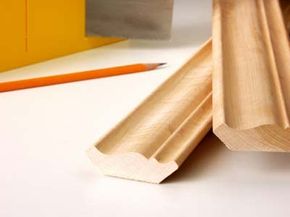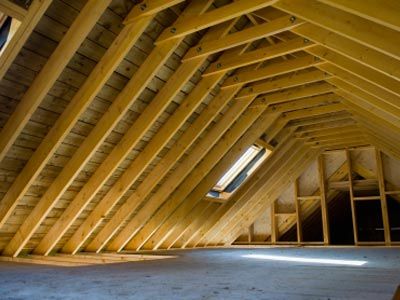While decorative molding isn't an essential part of the building process, it has an important role in finishing off a room. It can add value and protection to your home, and provide a more finished look.
Different moldings serve different purposes. Some moldings surround doorframes and windows. Others run around the perimeter of a room. At the base of the wall, where it meets the floor, baseboards (also called wall boards), shoe molding and quarter-round trim hide the ends of flooring. In the center of the wall, chair rail molding helps protect walls from being damaged by the backs of chairs hitting the wall. Crown molding covers the area where the ceiling meets the wall.
Advertisement
Molding pieces are typically joined together in one of three ways: scarf or spliced joints, coped joints and mitered joints. Scarf joints join two pieces end-to-end, and are typically cut in 45-degree angles to provide an overlap. Coped and mitered joints are used to provide a clean look when two walls meet in corners [source:Anderson].
As the saying goes, the devil is in the details, which, in the case of molding, is in the corners. Coping, more often used for inside corners, involves manually cutting away part of the molding to provide a tight fit. Mitering requires precise cutting and measuring to ensure a tight fit of the two molding pieces [source: Charles and Hudson].
Consider the angles created when two perpendicular walls meet. The angle formed should be either 90 degrees (for an inside corner) or 270 degrees for an external corner. To make those pieces of molding fit a corner, two pieces of molding need to be cut at 45 degrees so that they match up cleanly at the internal corner, and two pieces cut at 135 degrees would be needed for the external corner.
Remember that not many corners are a perfect 90 degrees. And while baseboard, quarter nose and chair rail molding lie flat against the wall, crown molding does not, so it needs extra effort to cut it correctly.
Read on to learn about the importance of measuring molding before cutting it.
Advertisement

